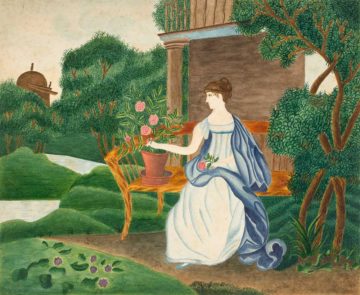Mary Kuhn in Lapham’s Quarterly:
 In 1870 the American Independent ran an article from Charles Dickens’ magazine All the Year Round titled “Have Plants Intelligence?” The provocative question in the title was designed to spark intuitive negative responses, but the paragraphs that follow rehearse a clear argument in the affirmative. Life itself “presupposes in its possessor, whether animal or vegetable, a faculty of sensation that administers to its happiness, and that may consequently administer to its suffering,” the author argues. This meant that plants experience pleasure and pain. Although the author suggests that the scientific community had dismissed the notion of feeling plants, in fact naturalists had been asking and debating this issue for decades, studying plants like the carnivorous flytrap that caught prey and the “sensitive” mimosa that shrank upon touch. By the mid-nineteenth century a number of scientists believed that plants could at least feel, if not think, and their findings were received by audiences whose own experiences cultivating plants had allowed them to observe a stunning array of plant behaviors. In the garden, the parlor, and the greenhouse, plants’ living qualities became an object of fascination and raised questions like the one the article poses rhetorically. How to make sense of the behaviors of plants? Did they have an inner life? It could certainly appear so, though so much remained a mystery.
In 1870 the American Independent ran an article from Charles Dickens’ magazine All the Year Round titled “Have Plants Intelligence?” The provocative question in the title was designed to spark intuitive negative responses, but the paragraphs that follow rehearse a clear argument in the affirmative. Life itself “presupposes in its possessor, whether animal or vegetable, a faculty of sensation that administers to its happiness, and that may consequently administer to its suffering,” the author argues. This meant that plants experience pleasure and pain. Although the author suggests that the scientific community had dismissed the notion of feeling plants, in fact naturalists had been asking and debating this issue for decades, studying plants like the carnivorous flytrap that caught prey and the “sensitive” mimosa that shrank upon touch. By the mid-nineteenth century a number of scientists believed that plants could at least feel, if not think, and their findings were received by audiences whose own experiences cultivating plants had allowed them to observe a stunning array of plant behaviors. In the garden, the parlor, and the greenhouse, plants’ living qualities became an object of fascination and raised questions like the one the article poses rhetorically. How to make sense of the behaviors of plants? Did they have an inner life? It could certainly appear so, though so much remained a mystery.
If the scientific community was not as categorically opposed to the idea of plant feeling as the author implies, the article’s turn to poetry suggests literature might excel at exploring the inherent difficulties in representing this other form of life. As scholar Sari Altschuler has shown, nineteenth-century members of the medical community turned to literature to better understand the mysteries of bodies, diseases, and environments. Could literature likewise yield insight or appreciation for the liveliness of plants?
More here.
